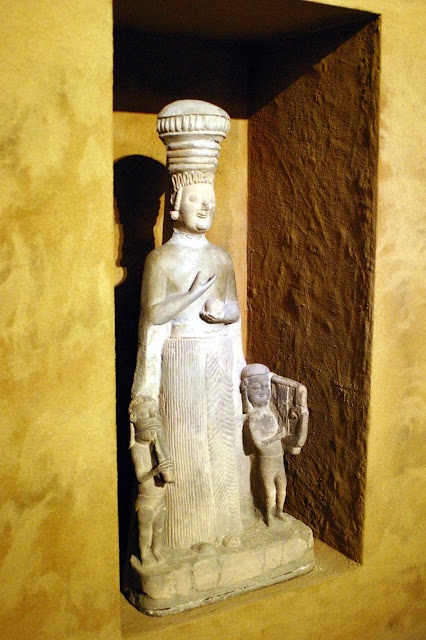The Phrygian statue of Kybele, also known as Agdistis, is an extraordinary artifact that provides a deep insight into the religious and mythological practices of ancient Phrygia. Dating back to around 700-550 BC, the statue was uncovered at Bogazköy, in modern-day Turkey, offering a glimpse into the spiritual life of a civilization that revered the natural world in profound ways.
The Significance of Agdistis and Kybele
Agdistis, who is believed to personify a sacred mountain in Phrygia, shares a deep connection with the more widely known Kybele—also referred to as Kubaba in some traditions. Agdistis, along with Ida Mate, forms part of the triumvirate of the Mother Goddess of the Earth. These figures were central to Phrygian spirituality, representing fertility, nature, and the life-giving forces of the Earth. Kybele, often depicted as a maternal figure surrounded by animals and elements of nature, is revered for her role as a nurturing force, embodying the Earth’s inherent power to sustain and regenerate life.

In Phrygian belief, the Mother Goddess was not merely an abstract concept but a divine presence intimately connected with the physical world. The goddess’s association with sacred mountains and caves highlighted the belief that certain natural spaces were conduits between the mortal world and the divine. The mountain, as the sacred abode of the goddess, was more than just a geological formation; it was seen as the earthly manifestation of her divine power. Caves, often thought of as the womb of the Earth, symbolized her protective and generative qualities.
The Statue as a Cultural and Religious Artifact
This statue of Agdistis is an invaluable cultural and religious artifact, providing insights into the craftsmanship and religious devotion of the Phrygians. The fine details of the sculpture reflect the profound reverence the Phrygians had for their goddess. Through these artistic expressions, the ancient people of Phrygia communicated their understanding of the Earth as a living, sacred entity. Kybele’s connection to nature is not just symbolized in her iconography, but in the environment in which her worship took place—among the sacred mountains, forests, and caves of Phrygia.

Kybele’s significance extended far beyond Phrygia. The worship of the Earth goddess found a place in other ancient civilizations, notably the Greeks and Romans. Known as Cybele in these cultures, her worship spread to different regions, where she was adopted and adapted, reflecting her broad cultural importance. This statue stands as a testament to the continuity of Earth goddess worship, highlighting the shared belief across these ancient cultures in the sanctity of the Earth and its natural features.
The Enduring Legacy of Earth Worship
The Phrygian statue of Kybele is not simply an object of art; it is a window into the heart of a deeply rooted religious tradition. It speaks to the ancient belief that the Earth was not just a place to live, but a living, breathing entity deserving of reverence. The goddess Kybele, with her deep connection to nature, sacred landscapes, and fertility, became a symbol of the interconnectedness of life and the divine. Her worship served as a reminder that the Earth provided sustenance, protection, and spiritual guidance.
Today, this ancient statue continues to capture the imagination of those interested in the religious and cultural history of the ancient world. It stands as a powerful reminder of the enduring relationship between humanity and the natural world, offering insight into how ancient civilizations viewed their surroundings and the divine forces they believed governed them.
Conclusion
The Phrygian statue of Kybele is more than just a sculptural masterpiece; it is an artifact of great historical, cultural, and religious significance. Through this statue, we are reminded of the ancient reverence for the Earth as a living, divine entity. Agdistis, Kybele, and the other Earth goddesses of Phrygia represent a profound connection to nature and the belief that the Earth itself holds divine power. As such, the statue remains a poignant reminder of humanity’s ancient relationship with the natural world and the enduring importance of the Mother Goddess in early spiritual traditions.

